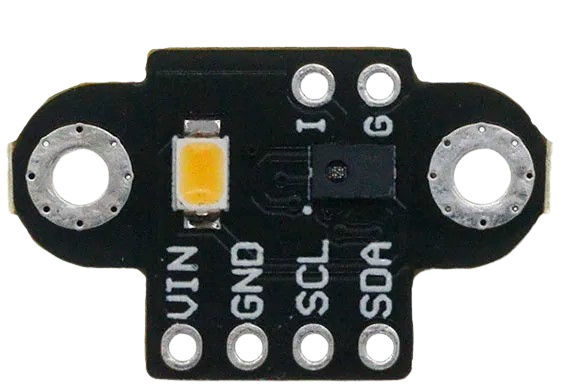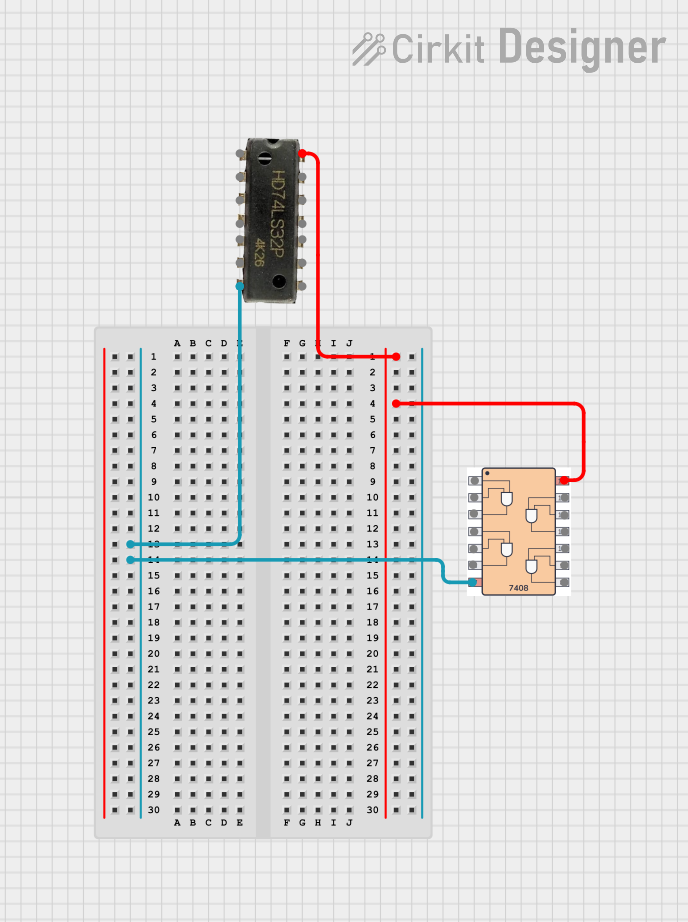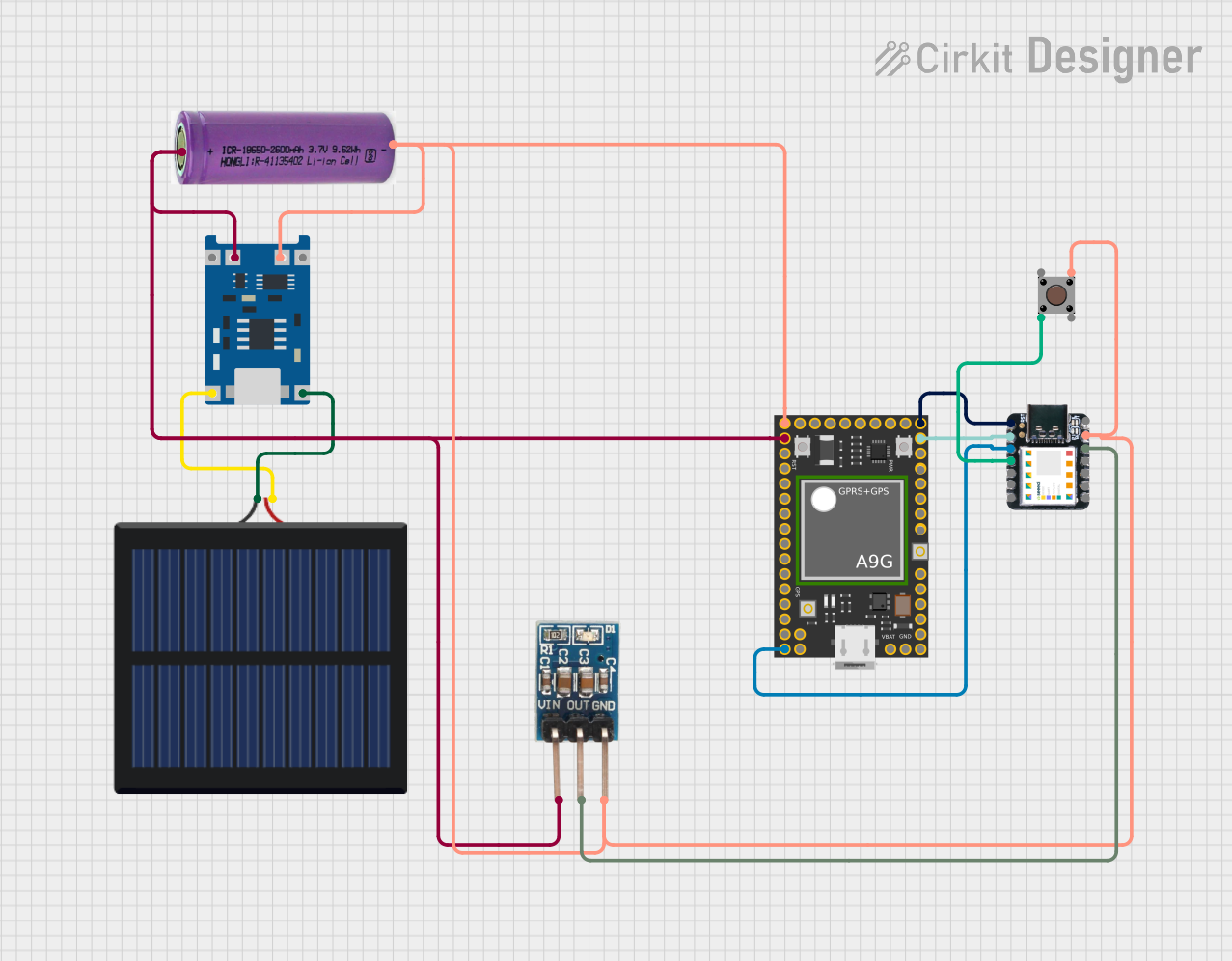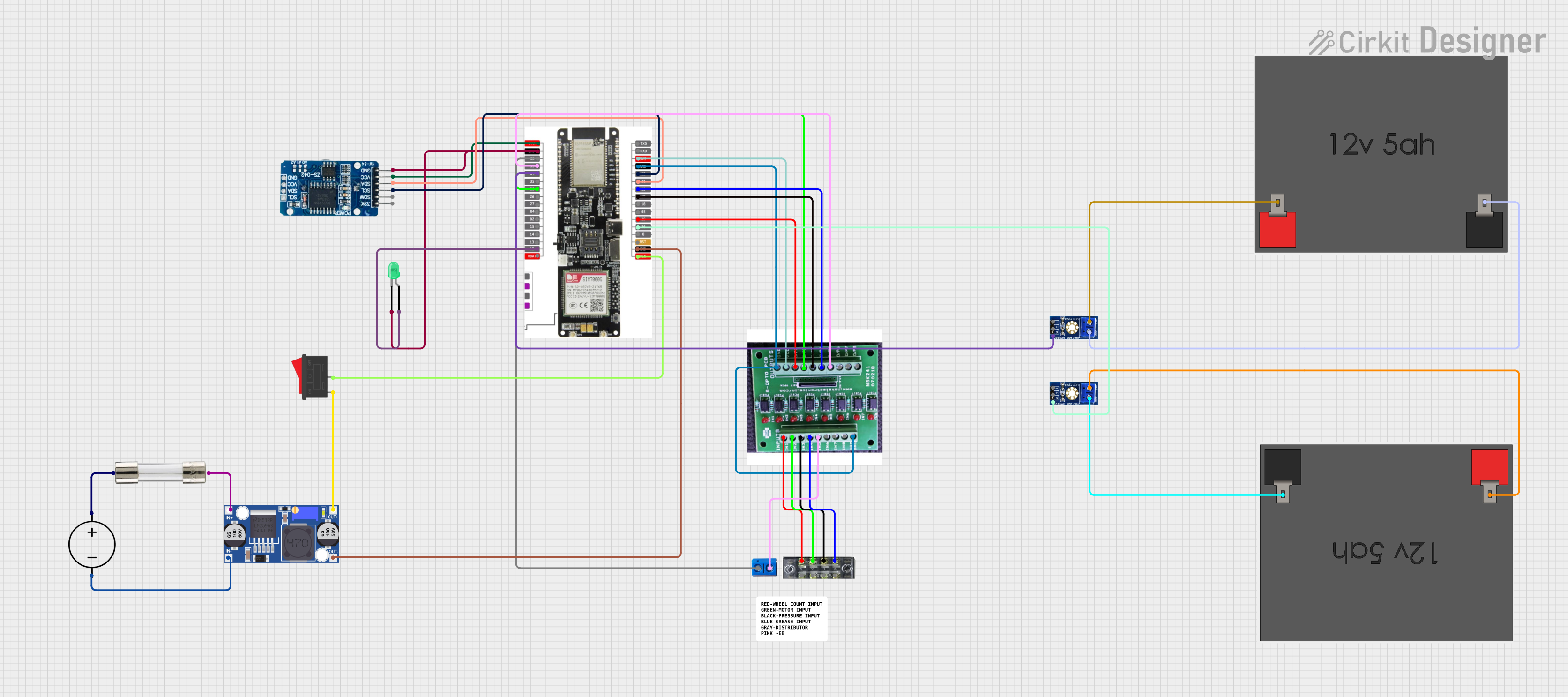
How to Use GY-AS7343: Examples, Pinouts, and Specs

 Design with GY-AS7343 in Cirkit Designer
Design with GY-AS7343 in Cirkit DesignerIntroduction
The GY-AS7343 is a multi-channel spectral sensor designed to detect light across four distinct channels within the visible and near-infrared spectrum. This sensor is particularly adept at color sensing, ambient light detection, and can be used in a variety of applications such as colorimeters, lighting controls, and health monitoring devices. Its precise spectral sensing capabilities make it a valuable component for projects requiring accurate color and light analysis.
Explore Projects Built with GY-AS7343

 Open Project in Cirkit Designer
Open Project in Cirkit Designer
 Open Project in Cirkit Designer
Open Project in Cirkit Designer
 Open Project in Cirkit Designer
Open Project in Cirkit Designer
 Open Project in Cirkit Designer
Open Project in Cirkit DesignerExplore Projects Built with GY-AS7343

 Open Project in Cirkit Designer
Open Project in Cirkit Designer
 Open Project in Cirkit Designer
Open Project in Cirkit Designer
 Open Project in Cirkit Designer
Open Project in Cirkit Designer
 Open Project in Cirkit Designer
Open Project in Cirkit DesignerTechnical Specifications
Key Technical Details
- Spectral Range: Visible to near-infrared
- Number of Channels: 4
- Interface: I2C
- Supply Voltage: 3.3V - 5V
- Operating Current: Typically 5mA
- Peak Sensitivity Wavelengths: TBD nm (Channel 1), TBD nm (Channel 2), TBD nm (Channel 3), TBD nm (Channel 4)
- Resolution: 16-bit ADC per channel
- Response Time: TBD ms
Pin Configuration and Descriptions
| Pin Number | Pin Name | Description |
|---|---|---|
| 1 | VDD | Power supply (3.3V - 5V) |
| 2 | GND | Ground |
| 3 | SCL | I2C clock signal |
| 4 | SDA | I2C data signal |
| 5 | INT | Interrupt (active low) |
| 6 | NC | No connection (reserved for future use) |
Usage Instructions
Integration into a Circuit
To use the GY-AS7343 in a circuit:
- Connect the VDD pin to a 3.3V or 5V power supply.
- Connect the GND pin to the ground of the power supply.
- Interface the SCL and SDA pins with the I2C bus of a microcontroller, such as an Arduino UNO.
- Optionally, connect the INT pin to a digital input on the microcontroller if interrupt-driven measurements are required.
Best Practices
- Ensure that the power supply is stable and within the specified voltage range.
- Use pull-up resistors on the I2C lines (SCL and SDA) if they are not already present on the microcontroller board.
- Avoid placing the sensor in direct sunlight or near strong light sources that could saturate the sensor.
- Calibrate the sensor for the specific application to ensure accurate readings.
Example Code for Arduino UNO
#include <Wire.h>
// GY-AS7343 I2C address (check datasheet for your device's address)
#define AS7343_ADDRESS 0x39
void setup() {
Wire.begin(); // Initialize I2C
Serial.begin(9600); // Start serial communication at 9600 baud rate
// Configure sensor (pseudo-code, replace with actual configuration)
writeRegister(AS7343_ADDRESS, CONFIG_REGISTER, CONFIG_SETTINGS);
}
void loop() {
// Read sensor data (pseudo-code, replace with actual read commands)
uint16_t channel1 = readChannel(AS7343_ADDRESS, CHANNEL1_REGISTER);
uint16_t channel2 = readChannel(AS7343_ADDRESS, CHANNEL2_REGISTER);
uint16_t channel3 = readChannel(AS7343_ADDRESS, CHANNEL3_REGISTER);
uint16_t channel4 = readChannel(AS7343_ADDRESS, CHANNEL4_REGISTER);
// Output the readings to the serial monitor
Serial.print("Channel 1: "); Serial.println(channel1);
Serial.print("Channel 2: "); Serial.println(channel2);
Serial.print("Channel 3: "); Serial.println(channel3);
Serial.print("Channel 4: "); Serial.println(channel4);
delay(1000); // Wait for 1 second before reading again
}
// Function to write a value to a register (pseudo-code)
void writeRegister(byte address, byte reg, byte value) {
Wire.beginTransmission(address);
Wire.write(reg);
Wire.write(value);
Wire.endTransmission();
}
// Function to read a 16-bit value from a register pair (pseudo-code)
uint16_t readChannel(byte address, byte reg) {
Wire.beginTransmission(address);
Wire.write(reg);
Wire.endTransmission(false);
Wire.requestFrom(address, (byte)2);
uint16_t reading = Wire.read();
reading |= Wire.read() << 8;
return reading;
}
Please note that the above code is a template and does not contain actual register addresses or configuration settings. Refer to the GY-AS7343 datasheet for specific commands and register addresses.
Troubleshooting and FAQs
Common Issues
- Sensor Not Responding: Ensure that the sensor is correctly powered and that the I2C connections are secure. Check for proper pull-up resistors on the I2C lines.
- Inaccurate Readings: Calibrate the sensor for the light conditions of your application. Verify that the sensor is not exposed to saturating light levels.
FAQs
Q: Can the GY-AS7343 be used with a 5V microcontroller like the Arduino UNO? A: Yes, the GY-AS7343 can be interfaced with a 5V microcontroller, provided that the logic levels are compatible or level shifting is used.
Q: How can I calibrate the sensor for accurate color detection? A: Calibration involves taking readings under known light conditions and adjusting the readings based on known reference values. This process can be complex and may require specialized equipment.
Q: What is the purpose of the INT pin? A: The INT pin can be used to trigger an interrupt on the microcontroller when a measurement is ready, allowing for more efficient data collection.
For further assistance, consult the GY-AS7343 datasheet or contact technical support.